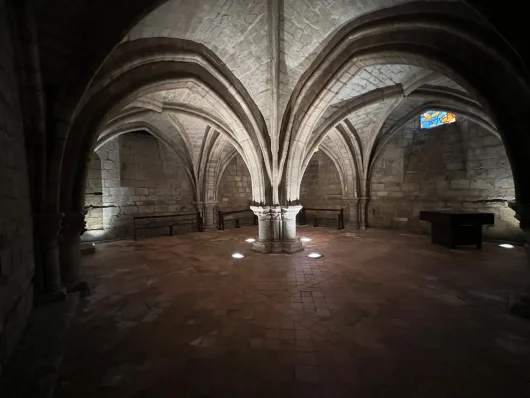One of the many charms of the town is its situation by the Charente. The main commercial artery, the river, shaped the town. Townhouses and the cellars of the great cognac houses have given it its personality.
Archaeological excavations to the west of the town have uncovered signs of human occupation from neolithic times and later from the Gallo-Roman period. During the early Middle Ages, the town centre seems to have been more to the east, around the Saint-Pierre priory, a dependency of the Benedictine abbey of Saint-Cybard in Angoulême.
Jarnac’s most glorious moment came in 1410, when the important lordship passed into the hands of the Chabot family, owners until the Revolution.
Between river and vineyards

Jarnac is also the birthplace of President François Mitterrand, and you can still visit the house where he was born.
Wandering along the river, on foot or by bike is an enjoyable way to discover the town’s eventful history step by step: the Saint-Pierre church, the Place du Château or try a more modern visit with geocaching or virtual reality.
Traces of human occupation date back to neolithic times and the Gallo-Roman period.
From the Middle Ages, salt-laden barges sailed up the river, the salt-trade playing a major role in the town’s economy. Jarnac was one of the principal salt ports on the Charente river.
The former château
Jarnac was built around the Saint-Pierre priory and the château. In the 13th century, the town was surrounded by a wall with 9 towers and 2 main gates, the Saint-André gate (constructed at the beginning of the current main street) and the Saint-Pierre gate.
In the 10th century the lord Wardrade Lorichés built a castle to defend Jarnac from raiders. During the Hundred Years’ War, the castle was attacked many times. In the 15th century, Renaud Chabot, the lord and Count of Jarnac built a new château that was sacked in 1793, its archives burned and the park partly cleared.
In 1800, the château was in ruins and a decision was taken to demolish it to build a new road. A public square, Place du Château, is all that remains.

Le coup de Jarnac
This expression “Le coup de Jarnac” came into use during the 16th century … but why and who? Back to the origins of Guy Chabot’s secret boot!
“France is not like Jarnac but I would like the whole of France to resemble Jarnac…”


